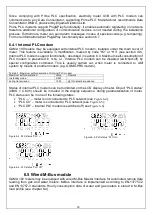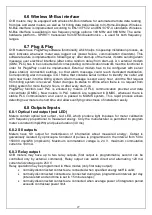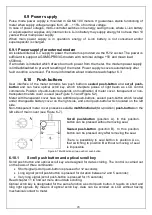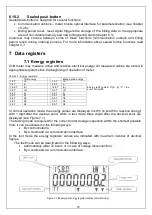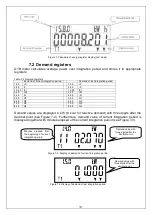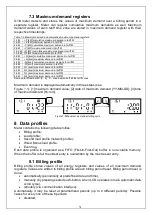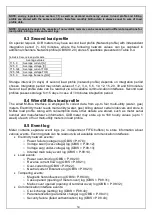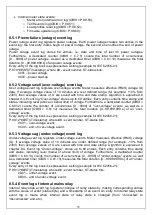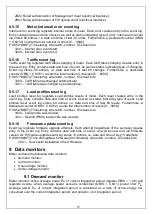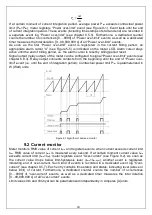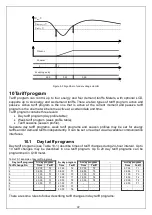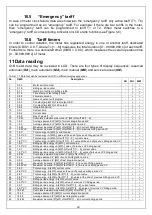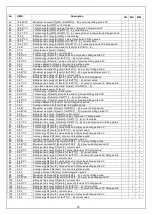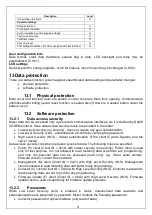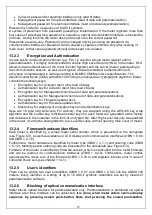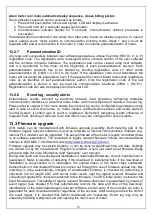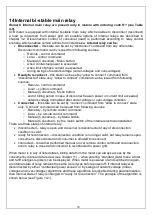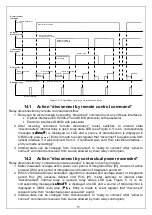
40
t
A
P
av
∆
∆
=
If at certain moment of current integration period, average power P
av
exceeds contractual power
limit (P
av
>P
lim
), meter registers “Power over-limit” event (see Figure 9-1). Event lasts until the end
of current integration period. These events (including time stamps of start and end) are recorded in
a separate event log “Power over-limit” (see chapter 8.5.5). Furthermore, a dedicated counter
counts the number of occurrences [0T.9999] of “Power over-limit” events, as well as a dedicated
timer measures the total duration [0T99,999,999 s] of all “Power over-limit” events.
As soon as the first “Power over-limit” event is registered in the current billing period, an
appropriate alarm cursor “A” (see Figure 5-5) is indicated on the meter LCD. Alarm cursor stays
active until the end of billing period, i.e. the alarm cursor is reset by billing period reset.
Signal output (relay output) of the meter can be configured to signal “Power over-limit” events (see
chapter 6.8.3). Relay output connects contacts from the beginning until the end of “Power over-
limit” event (i.e. until the end of integration period). Contractual power limit P
lim
is parameterized in
W (Watt) units.
Figure 9-1 Algorithm of demand monitor
9.2 Current monitor
Meter monitors RMS value of current I
rms
and registers events, when current exceeds current limit
I
lim
. RMS value of current I
rms
is measured every second. If at certain moment current value I
rms
exceeds current limit (I
rms
>I
lim
), meter registers event “Over-current” (see Figure 9-2). As soon as
the current value drops below limit-hysteresis level (I
rms
<I
lim-hyst
), another event is registered,
indicating end of over-current. Such kind of events is recorded in a dedicated event log “Over-
current” (see chapter 8.5.7). Each entry contains time stamp and status, indicating level (above or
below limit) of current. Furthermore, a dedicated counter counts the number of occurrences
[0T.9999] of “over-current” events, as well as a dedicated timer measures the total duration
[0T99,999,999 s] of all “over-current” events.
Limit values Ilim and Ilim-hyst can be parameterized independently in Amperes [A] units.
Summary of Contents for G1B Series
Page 2: ......

